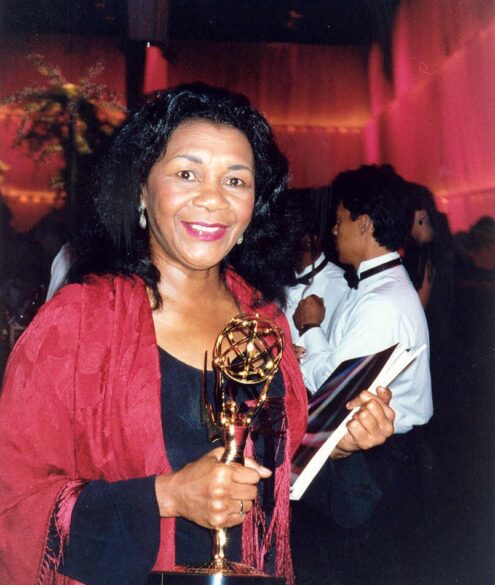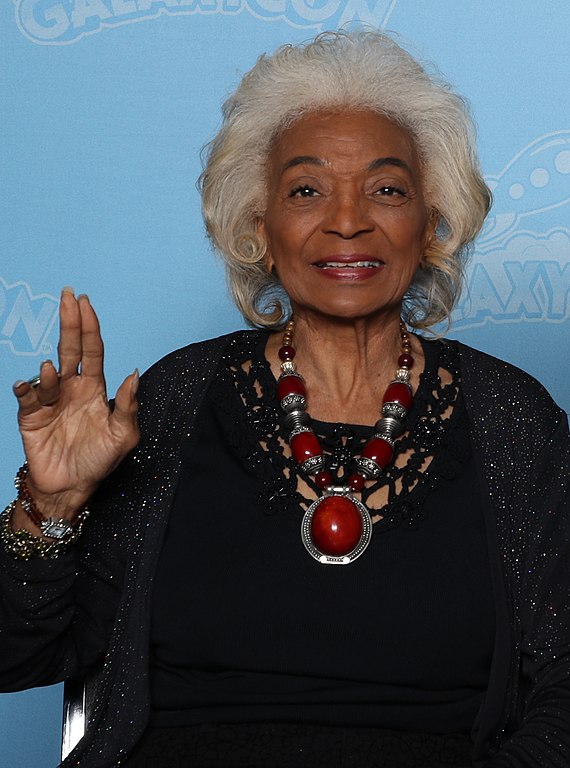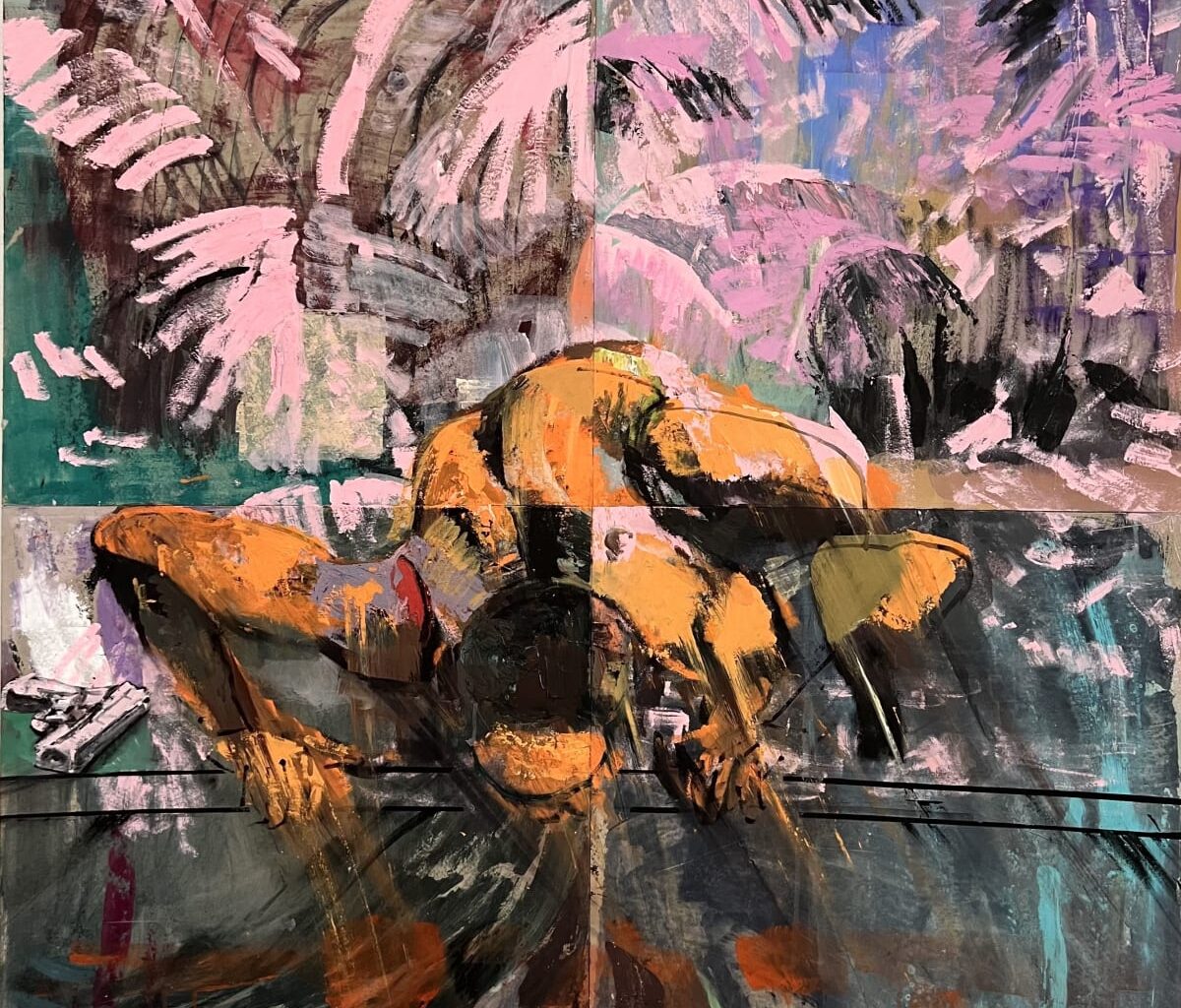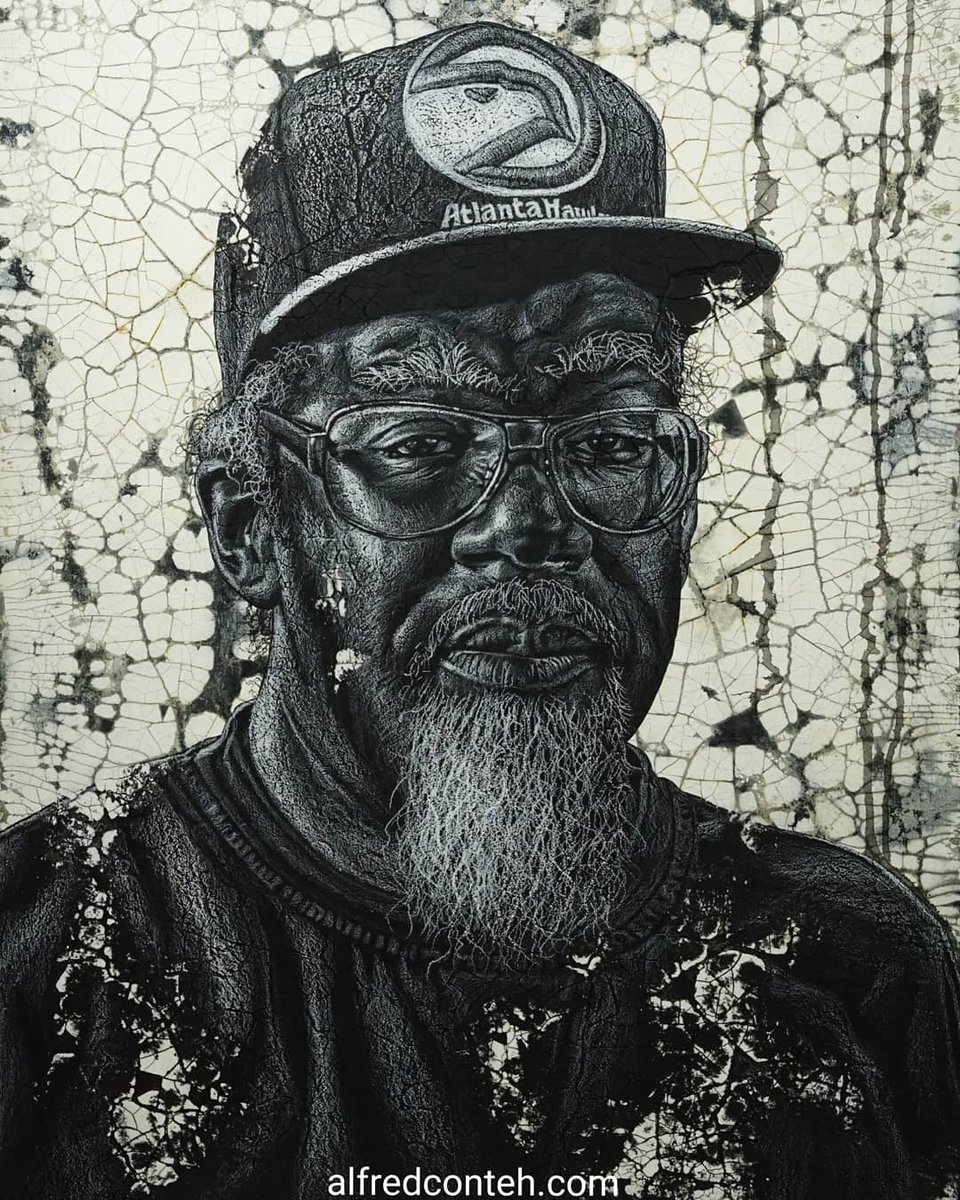This Week in Black Art and Culture is sponsored by The Children’s Trust
This week in Black art and culture, Gray Gallery in New York and Chicago announce Citing Black Geographies exhibit. Tony- and Emmy-winning actress Mary Alice of A Different World and Fences passes at 85. The Getty and Smithsonian Museums together acquire Ebony and Jet’s historical photo archive. Nichelle Nichols, who played Lieutenant Uhura on Star Trek, has died at 89. A Site of Struggle: American Art Against Anti-Black Violence opens Aug. 13 at Montgomery Museum of Fine Arts.
Citing Black Geographies Exhibit
Citing Black Geographies showcases the work of 15 artists whose practices investigate “African space,” a phrase that describes the topographies, zones, situations and structures that reflect Black cultural experience. Citing Black Geographies, curated by Romi Crawford, a cultural theorist and professor of visual and critical studies at the School of the Art Institute of Chicago, examines dichotomous and illusive ideas of Black space.
Amiri Baraka (LeRoi Jones), Dawoud Bey, McArthur Binion, the Black Arts Movement School Modality, Nick Cave, Coco Fusco, Theaster Gates, Rashid Johnson, Tony Lewis, the Staples Jr. Singers, Tavares Strachan, Jan Tichy, Jina Valentine, Carrie Mae Weems and Amanda Williams are among the artists featured in the group exhibition. The exhibition is presented as an open-ended index of historical, speculative, and emerging instantiations of Black space, beckoning attention and awareness of “signal black landscapes,” a phrase Crawford uses to characterize settings that reflect Black cultural experience.
The show addresses periodic repetitions of Black space via works ranging from painting, print, installation and drawing to photography, sound, video, film and performance, examining Black space as a modern ideal. Citing Black Geographies also confirms Black origins in the American South with a live performance of the Staples Jr. Singers, When Do We Get Paid (In Full), co-produced by Crawford and the record label Luaka Bop.
“Space, some will say, is not intrinsically racially specific,” says Crawford. “And yet there are some locations and territories that read obviously and overtly as ‘Black space’—zones that have some connectivity to Black people’s lives, history and culture. In this sense, Black space is cultivated or fostered regularly and variously.” Citing Black Geographies will be on view at GRAY Chicago from Sept. 9-Oct. 28, 2022, and GRAY New York from Nov. 17-Dec. 23, 2022.

Above: By photo by Alan Light, CC BY 2.0, https://commons.wikimedia.org/w/index.php?curid=1135750
Mary Alice of A Different World and Fences Passes
Mary Alice, an Emmy winner and a Tony winner, well noted as an exemplary inspiration in film, TV and stage, died at 85. Her death was confirmed to multiple news outlets by the New York Police Department.
Most known for her two-season stint as dorm director Leticia “Lettie” Bostic on NBC’s Cosby Show spin-off A Different World, Mary Alice Smith, born in Indianola, Mississippi, was a teacher in Chicago in the mid-1960s when she chose to pursue acting. In a quote from an interview with The Tribune in 1986 cited in The New York Times, Alice shared how the change affected her. “Acting has been a big sacrifice,” she said. “I sometimes think that if I had continued to be a teacher, I would be retired already. The income would have been constant. But I didn’t feel about teaching the way I do about acting. It’s my service in life. I’m supposed to use it.”
She began her career in New York’s off-Broadway theaters, where she earned an Obie Award for her portrayal of Portia in Joseph Papp’s off-Broadway production of Julius Caesar in 1979. Her most notable Broadway milestone was achieved in 1987, when she portrayed Rose in the critically acclaimed Fences. She received the Tony Award for Best Featured Actress in a Play for her performance.
Alice’s first film job came in 1974 when she appeared in The Education of Sonny Carson. Smith made her film debut in 1976 as the character Effie Williams, the mother of three children, also played by Irene Cara, Lonette McKee and Dwan Smith. Alice appeared in a number of films, including The Bonfire of the Vanities, Awakenings, Malcolm X, Down in the Delta, and Sunshine State. Alice would later appear on television in shows such as Sanford and Son, Good Times, All My Children, The Women of Brewster Place, L.A. Law, Cosby, Touched By An Angel, Providence, Soul Food, Oz, Line of Duty and The Jury.
Her portrayal on I’ll Fly Away as recurring-character Marguerite Peck garnered her the 1993 Emmy Award for Outstanding Supporting Actress in a Drama Series. She was inducted into the Theater Hall of Fame in 2000. Alice took over for Gloria Foster as the Oracle in the third edition of The Matrix film series in 2003, and she continued to act until 2005.
Ebony and Jet’s Photo Archive
A consortium comprising the Ford Foundation, the J. Paul Getty Trust, the John D. and Catherine T. MacArthur Foundation, the Mellon Foundation and the Smithsonian Institution, announced today the official transfer of ownership of the acclaimed Johnson Publishing Company (JPC) archive to the Smithsonian National Museum of African American History and Culture (NMAAHC) and to the Getty Research Institute, a program of the Getty Trust.
The Getty Trust has committed $30 million in support for the processing and digitization of the archive—an essential step in the critical work of making this preeminent collection available and searchable to scholars, researchers, journalists and the general public. With work already underway, portions of the archive will be accessible to the public during the ongoing intensive digitization process.
The JPC collection is regarded as one of the most significant and substantial collections of Black American culture in the 20th century. It features images from the iconic publications Ebony and Jet. Though now jointly owned by the two entities that are sharing in the collection’s care and processing, the archive will be physically housed at the NMAAHC in Washington, D.C., ensuring its availability for the public to access in the years to come.
“For decades, Ebony and Jet documented stories of Black celebrity, fashion, and the Civil Rights Movement and provided an opportunity for African Americans to see an authentic public representation of themselves while also offering the world a fuller view of the African American experience,” said Kevin Young, the Andrew W. Mellon Director of the Smithsonian’s National Museum of African American History and Culture. “Our museum is proud that this significant and iconic collection of African American images will be housed in our museum and preserved for generations to study, observe and enjoy.”
Since the consortium’s purchase, the entire collection has remained carefully housed in Chicago—the city where JPC was headquartered since its inception—for ongoing conservation and select exhibition and programming. While the collection will be housed primarily at NMAAHC, a portion of the JPC archive pertinent to Chicago history and culture is expected to remain housed permanently in Chicago.
The photographic archives of JPC, which include more than 3 million photo negatives and slides, 983,000 photographs, 166,000 contact sheets and 9,000 audio and visual recordings, represent the most comprehensive collection documenting Black life in the 20th century. Considered staples in Black homes across the nation, Ebony and Jet were the first publications to address the severe lack of Black representation in popular culture and media.
Told from diverse perspectives in multiple mediums, including video and music, and documenting the Black experience over seven decades during a time of intense change, this incomparably rich collection embodies the modern Black history of the United States. Beyond the collection itself, the archive also reveals the processes and editorial practices of the company, founded in the midst of Jim Crow in 1942 by John H. and Eunice W. Johnson, which grew to become the most powerful Black-owned publisher in the United States.

Above:Nichelle Nichols, 2019 by Super Festivals/Taurus Emerald
Nichelle Nichols: Star Trek’s Lieutenant Uhura Passes
Nichelle Nichols, best known as Lt. Uhura on the original Star Trek television series, died at 89 on Saturday in Silver City, New Mexico, according to her son Kyle Johnson. She portrayed Lt. Uhura in the original series, voiced her in Star Trek: The Animated Series, and appeared in all six Star Trek films. In Star Trek: The Motion Picture, Uhura was promoted to lieutenant commander; in Star Trek II: The Wrath of Khan, she was advanced to full commander.
Her performance as Uhura garnered acclaim for overcoming prejudices that had confined Black women to performing roles as maids and included an unprecedented interracial onscreen kiss with co-star William Shatner. If it hadn’t been for the intervention of Rev. Martin Luther King Jr., a fan of the show, during a civil rights rally in 1967, Nichols would have quit before the second season to pursue a career on Broadway.
During the program’s third season, Nichols’ character and Shatner’s Capt. James Kirk experienced the first interracial kiss broadcast on a U.S. television series. In the episode, Plato’s Stepchildren, their characters, who had previously maintained a platonic relationship, were coerced into kissing by aliens who controlled their behavior. Worried about how Southern television stations might respond, showrunners wanted to record a second take of the moment where the kiss occurred off-screen. But, according to Nichols’ book, Beyond Uhura: Star Trek and Other Memories, she and Shatner purposefully flubbed lines to force the original version to be used.
In the late 1970s, Nichols’ outreach efforts on behalf of NASA assisted the organization in recruiting the first African American women into the astronaut corps, which included Dr. Mae Jamison, who acknowledged Star Trek as a key inspiration in her choice to become an astronaut. When Jamison traveled on the shuttle Endeavour in 1992, she became the first Black woman in space.
“Nichelle Nichols was a trailblazer and role model for women of color, and all women, from the mid-1960s on,” said Michelle Hanlon, president of the National Space Society. “Her portrayal of Lt. Uhura in Star Trek allowed both her talent and her dignity to show through, and her work with NASA and the National Space Society was invaluable. NSS sends condolences to her family, and she will be dearly missed.” Nichols was a frequent at Star Trek conventions and events far into her 80s, but she withdrew from acting after her son reported that she had dementia.
Montgomery Museum of Fine To Open Exhibition About Struggle
The Montgomery Museum of Fine Arts (MMFA) will consider deeply how art has been used to protest, process, mourn and memorialize racially motivated attacks against African Americans in A Site of Struggle: American Art against Anti-Black Violence, on view Aug. 13-Nov. 6. Organized by The Block Museum of Art at Northwestern University, the exhibition includes more than 50 works in a wide range of media that span more than a century.
Conceived in 2016, A Site of Struggle takes a new approach to looking at the intersection of race, violence and art by examining how American artists have grappled with anti-Black violence from the anti-lynching campaigns of the 1890s to the founding of Black Lives Matter in 2013. The current national reckoning on racial violence continues to inform this project.
“Montgomery, Alabama is a city with a deep civil rights history that currently acts as a national and international forum on racial injustice. Since the 1980s, the MMFA has offered exhibitions and programs meant to push the institution in the direction of diversity and inclusion. More recently, the MMFA has aligned its priorities to address engagement and sustainability along with the Museum’s new DEAI initiatives,” said Angie Dodson, MMFA’s director.
Among the artists included in A Site of Struggle are Laylah Ali (born 1968), George Bellows (1882-1925), Elizabeth Catlett (1915-2012), Darryl Cowherd (born 1940), Ernest Crichlow (1914-2005), Melvin Edwards (born 1937), Theaster Gates (born 1973), Ken Gonzales-Day (born 1964), Norman Lewis (1909-1979), Kerry James Marshall (born 1955), Isamu Noguchi (1904-1988), Howardena Pindell (born 1943), Carl and Karen Pope (born 1961), Paul Rucker (born 1968), Alison Saar (born 1956), Lorna Simpson (born 1960), Dox Thrash (1893-1965), Carrie Mae Weems (born 1953), Pat Ward Williams (born 1948), and Hale Woodruff (American, 1900-1980).
A Site of Struggle is curated by Janet Dees, the Steven and Lisa Munster Tananbaum Curator of Modern and Contemporary Art at The Block, with the assistance of Alisa Swindell, associate curator of photography at the Hood Museum of Art, Dartmouth College, and former curatorial research associate at The Block. The exhibition explores how art history can help inform the understanding of the deep roots of racial violence.
“From realism to abstraction, from direct to more subtle approaches, American artists have developed a century of tools and creative strategies to stand against enduring images of African American suffering and death. Contemporary artists taking on this subject are doing so within a long and rich history of American art and visual culture that has sought to contend with the realities of anti-Black violence,” Dees said.
In creating A Site of Struggle, Dees convened a national group of established and emerging scholars and museum professionals to consult on the exhibition’s themes, content and format. Critical discussions about the gallery installation of the exhibition centered around ways to responsibly present this challenging material and offer a structure of care for audiences. These best practices include limiting the number of works in the space to provide visual and psychological rest, controlling the sight lines to the most graphic works, and offering numerous opportunities for respite and quiet reflection.
Additional resources will provide information about community support and access to social justice organizations. Partnerships with various community groups and leaders, along with planned actions, allow the MMFA to engage with the community at its heart and to have them involved more fully in the life of the Museum. Projects like A Site of Struggle reflect the core values of the MMFA: generating partnerships, elevating voices that express multiple points of view and uncovering different stories through new interpretations of American art.
– Compiled by Sumaiyah E. Wade











